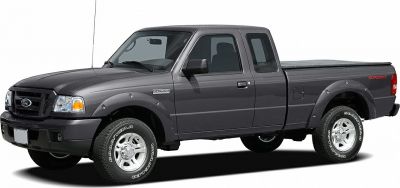 1989 Volkswagen Taro Dimensions, Size & Specs
1989 Volkswagen Taro Dimensions, Size & SpecsMeasurements of the 1989 Volkswagen Taro, engineered for optimal performance and comfort
| Dimensions | |
|---|---|
| Length: | 4725 mm186.0 in15.5 ft |
| Width: | 1650-1690 mm65.0-66.5 in5.4-5.5 ft |
| Height: | 1550-1745 mm61.0-68.7 in5.1-5.7 ft |
| Weight Specifications | |
| Curb Weight: | 1532 kg3377 lbs |
| Maximal permitted Weight: | 2460 kg5423 lbs |
| Tire Specifications | |
| Rims Sizes: | 14-inch rims:
|
The Volkswagen Taro, produced between 1989 and 1997, is a versatile pickup truck designed to serve as a reliable utility vehicle within the compact to mid-size truck segment. Measuring 4725 mm (186.0 inches) in length, the Taro balances maneuverability with cargo capacity, making it suited for both urban and off-road applications. Its width ranges from 1650 mm to 1690 mm (65.0 to 66.5 inches), providing a stable footprint without excessive bulk, while its height varies between 1550 mm and 1745 mm (61.0 to 68.7 inches), depending on configuration and cab style.
Weighing in at a curb weight of approximately 1532 kg (3377 lbs), the Taro offers a robust build capable of handling a maximum gross weight of up to 2460 kg (5422 lbs). This weight capacity ensures the pickup can carry substantial loads while maintaining performance and safety. The rim sizes offered on the Volkswagen Taro include options such as 5.5J x 14, 6J x 14, and 6J x 16 inches, allowing for various tire setups to enhance either load capacity or off-road capability.
Overall, the Volkswagen Taro's size and weight specifications position it well within the competitive light truck market of its era. Its practical dimensions make it suitable for work-related tasks requiring durability and reliability, while the size allows for easier navigation through tighter spaces compared to heavier trucks. The Taro remains a noteworthy option for those interested in compact pickup trucks from the late 20th century, offering a blend of German engineering paired with proven utility-focused design.
Discover the standout features that make the 1989 Volkswagen Taro a leader in its class
Have a question? Please check our knowledgebase first.
The Volkswagen Taro produced from 1989 to 1997 is a compact pickup truck with an overall length of 4725 mm (185.9 inches). Its width ranges between 1650 mm to 1690 mm (64.9 to 66.5 inches), depending on the specific model or trim, and its height varies from 1550 mm to 1745 mm (61 to 68.7 inches). This range in width and height accounts for different cab configurations or equipment levels. These dimensions make the Taro relatively compact compared to larger pickups, suitable for both urban and rural use.
The Volkswagen Taro has a curb weight of approximately 1532 kg (3377 lbs), which refers to the vehicle's weight without passengers or cargo but with all necessary operating consumables like fuel and fluids. The maximum weight capacity, or gross vehicle weight rating (GVWR), is about 2460 kg (5421 lbs). This means the truck can carry a payload—passengers plus cargo—approximately equal to the difference between the GVWR and curb weight, making it a capable workhorse for light to moderate hauling needs.
The width variation in the Volkswagen Taro is generally due to different trim levels or optional features such as wider wheel arches or side mirrors. At the narrower 1650 mm (64.9 inches), the Taro can maneuver easily in tight spaces and narrow streets, an advantage in urban environments or rural areas with confined roads. The wider 1690 mm (66.5 inches) versions may provide improved stability and a slightly wider cabin or cargo bed, which can enhance comfort and load capacity, but may require more careful handling in narrow conditions.
The Volkswagen Taro's height ranges from 1550 mm (61 inches) to 1745 mm (68.7 inches) depending on the model and configuration. This height difference typically corresponds to variations such as single cab vs. extended or double cab versions, as well as different suspension setups or optional roof accessories. The lower height models are easier to park in garages or under low-clearance areas, while taller configurations offer optimized interior space or greater ground clearance for off-road or heavy-duty use.
Yes, the Volkswagen Taro generally fits in a standard residential garage. The typical garage door height is about 2030 mm (80 inches), and with the Taro's maximum height at 1745 mm (68.7 inches), it provides enough vertical clearance for most standard garages. The width, even at its widest of 1690 mm (66.5 inches), should also fit comfortably within a standard two-car garage door width, which usually ranges from 2400 mm (94.5 inches) for a single car up to 4800 mm (189 inches) for double garages. However, consideration should be made for mirrors and any roof accessories.
The Volkswagen Taro was produced with cooperation from Toyota, sharing its platform with the Toyota Hilux of the same era, thus effectively replacing or supplementing Volkswagen’s smaller pickup offerings. Compared to its nearest predecessor models, the Taro is similar in length and height but offers competitive width and payload capacity. This cooperation allowed Volkswagen to offer a robust, reliable pickup with dimensions optimized for utility without excessive size, competing effectively against other compact pickups popular at the time.
The Volkswagen Taro, sharing similarities with the Toyota Hilux, is compact for a pickup truck with a length of 4725 mm (185.9 inches). Comparable pickups from the 1980s and 1990s like the Ford Ranger and Mazda B-Series have similar dimensions, often within a 200 mm margin in length and similar width and height. The Taro is slightly narrower than some American pickups but competitive within the compact pickup segment. Its moderate size helped it fit well in both urban and rural environments, offering more maneuverability than larger pickups.
The Volkswagen Taro was fitted with various rim sizes including 5.5J x 14, 6J x 14, and 6J x 16. The 'J' denotes the wheel flange profile, while the numbers refer to rim width (in inches) and diameter (in inches). Smaller 14-inch rims contribute to a smoother ride and better comfort on uneven roads, while 16-inch rims improve handling with larger tire options and potentially better traction. The choice between rim sizes depends on user preference and driving needs, balancing ride comfort and performance.
The Volkswagen Taro has a curb weight of approximately 1532 kg (3377 lbs) and a maximum weight capacity of 2460 kg (5421 lbs). Payload capacity is the difference between the maximum weight and curb weight, which in this case is approximately 928 kg (2044 lbs). This means the Taro can safely carry nearly a metric ton of cargo and passengers combined, making it a practical choice for light commercial and utility tasks, such as carrying tools, supplies, or even towing smaller trailers within this limit.
The Volkswagen Taro was produced from 1989 to 1997, positioned as a reliable compact pickup truck primarily for light commercial use. It was valued for its robust construction, economy, and versatility, benefiting from its platform-sharing with the Toyota Hilux. Common uses included agriculture, trades, small businesses, and recreational activities requiring a capable pickup with manageable size. Though never the largest or most powerful pickup in its class, it gained a reputation for practicality in urban and rural settings due to its efficient dimensions, decent payload capacity, and Volkswagen branding.
Discover similar sized cars.

| Production: | 2006-2012 |
|---|---|
| Model Year: | 2006 |
| Length: | 4800-5170 mm189.0-203.5 in |
| Width: | 1715-2057 mm67.5-81.0 in |
| Height: | 1676-1745 mm66.0-68.7 in |
